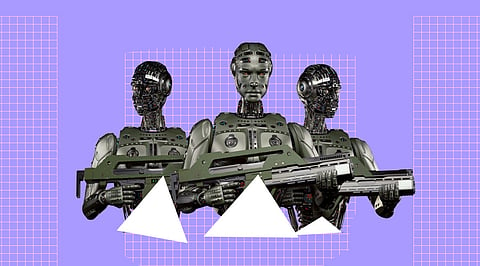
- Insights
- Cryptocurrencies
- Stocks
- White Papers
- Industry
- Geography
- Insights
- Cryptocurrencies
- Stocks
- White Papers
- Industry
- Geography


Artificial intelligence (AI) has the potential to fundamentally alter our society. And if the AI tools we have now are any indication of what is to come, we have a lot to look forward to.
We also have a lot to be concerned about. Specifically, cybercriminals and other threat actors are weaponizing AI. This is not a hypothetical concern, and AI image generators are not immune to abuse. In this article, we have explained the top 4 ways threat actors weaponize AI image generators which can be a serious security danger. Read to know more about threat actors.
AI image generators, like nearly all technology, can be abused by malicious actors. They are already being used for a variety of nefarious purposes. But what kinds of scams and cyberattacks can a criminal carry out with the assistance of AI image generators?
One obvious use of AI image generators by threat actors is social engineering, such as creating bogus social media profiles. Some of these programs can generate extremely realistic images that look exactly like genuine photographs of real people, and a scammer could use these fake social media profiles to catfish.
Unlike real people's photos, AI-generated photos cannot be found via reverse image search, and the cybercriminal does not have to work with a limited number of photographs to deceive their target-by using AI, they can generate as many as they want, creating a convincing online identity from scratch.
When devastating earthquakes struck Turkey and Syria in February 2023, millions of people around the world donated clothes, food, and money to the victims.
According to a BBC report, scammers exploited this by using AI to create realistic images and solicit donations. On TikTok Live, one scammer displayed AI-generated images of ruins and solicited donations from viewers. Another asked his followers for Bitcoin donations after posting an AI-generated image of a Greek firefighter rescuing an injured child from ruins.
Deepfakes have long been warned about by governments, activist groups, and think tanks. Given how realistic their creations are, AI image generators add another component to this problem. There's a UK comedy show called Deep Fake Neighbour Wars that makes light of unlikely celebrity pairings.
This can have real-world ramifications, as it nearly did in March 2022, when a fake video of Ukrainian President Volodymyr Zelensky telling Ukrainians to surrender circulated online, according to NPR. But that's just one example; the possibilities are nearly limitless, and there are countless ways a threat actor could use AI to harm someone's reputation, promote a false narrative, or spread fake news.
Scammers were using AI-generated content to create misleading advertisements and promote shady products, according to TrendMicro researchers in 2022. They created images that suggested popular celebrities used certain products and then used those images to run ad campaigns.
